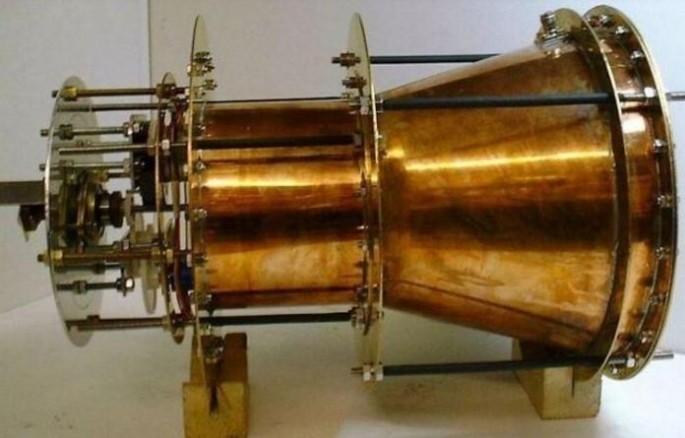A scientific paper about the controversial "Em Drive" engine has probably passed a peer review process and might be published by the AIAA Journal of Propulsion and Power of the American Institute of Aeronautics and Astronautics.
The study will be the first about this propulsion system that requires no propellant to generate thrust, defying all the accepted laws of physics, especially the law of conservation of momentum.
This law states the momentum of a system is constant if there are no external forces acting on the system. Basically this means an object won't move unless an outside force is applied to it. The Em Drive does the opposite and moves without a force being applied to it.
Because it provides thrust without consuming a propellant such as bulky rocket fuel or dangerous nuclear fuels, the Em Drive or EmDrive is being touted as the ideal power plant for spacecraft venturing out to other planets in our solar system and beyond.
That the paper passed rigorous academic scrutiny is said to have been confirmed by independent scientist Dr. José Rodal on NASA's Spaceflight forum but his comment was later removed, however. The paper was purportedly written by scientists at the Advanced Propulsion Physics Laboratory at NASA's Johnson Space Center, also known as "Eagleworks."
The paper, "Measurement of Impulsive Thrust from a Closed Radio Frequency Cavity in Vacuum," suggests Em Drive technology apparently works or has a scientific basis. Engineer Paul March of Eagleworks confirmed a paper on the Em Drive had gone ahead earlier this year, but didn't sound too optimistic when he noted that "peer reviews are glacially slow."
Also called a radio frequency (RF) resonant cavity thruster, an Em Drive is an electromagnetic thruster that uses no reaction mass and emits no directional radiation. Skeptics have long said the design principles of this machine aren't supported by prevailing scientific theories and violate the law of conservation of momentum.
Aerospace engineer Roger Shawyer designed the EM Drive in 2001 and has promoted the idea through his company, Satellite Propulsion Research. Chemical engineer Guido Fetta designed the Cannae Drive, based on similar principles.
While considered implausible, the Em Drive and Cannae Drive -- if they can work as theorized -- will revolutionize many propulsion applications, especially spaceflight.
The thruster somehow harnesses subatomic particles that continuously fade into and out of existence to generate thrust. It seems to exploit an effect called "quantum vacuum fluctuation" in which sub-atomic particles spontaneously create themselves in the vacuum of space before self-destructing.
The engine seems to capture these sub-atomic particles and turns them into plasma inside the microwave drive. This plasma generates the thrust that can power a spacecraft indefinitely.



























